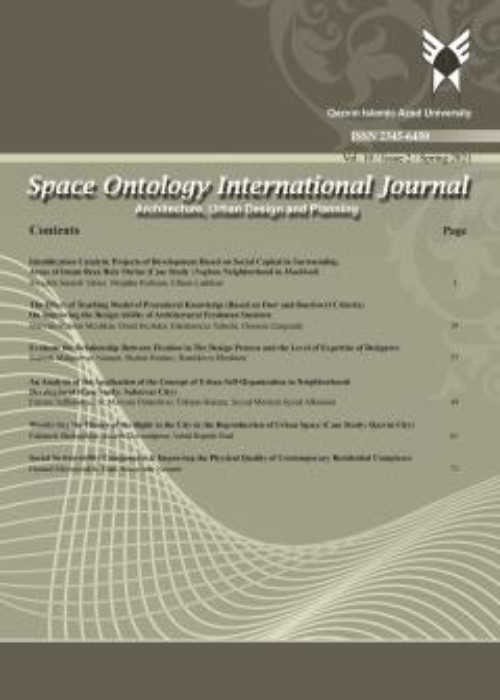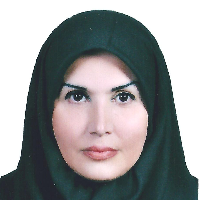Explaining the Role of Light on Quality of the Architectural Spaces in Iranian Mosques
Author(s):
Article Type:
Research/Original Article (دارای رتبه معتبر)
Abstract:
The research analyses the essence and relationships between the variables in the context of light and architecture, and it aims to develop the knowledge and design based on the light and recognition of the space, an effort was made to analyze the role of light on quality of the Iranian architecture and three samples of the most precious mosques were selected as the instances of this phenomenon, eg., Nasir-Al-Molk Mosque in Shiraz, Sheikh Lotf-Allah Mosque in Isfahan and Vakil Mosque in Shiraz. Light processing has different specifications in each of the mentioned mosques, as it is applied in a specific way which deserves consideration and it represented a number of considerable beautiful aspects. According to the valuable role of light on definition and interpretation of the space, it is assumed that: light has a great value in the quality of the spaces in the architecture of Iranian mosques and the fact it plays an effective role in elevating the “quality” of the architectural space and to elevate the “spatial quality and value”, and it was employed to induct the concepts including “movement”, “stillness”, “calmness” and “silence”, “sanctity”, “focus”, “attention”, “passion and excitement”, “clarity”, “ambiguity”, “sequence”, “guidance”, “routing”, “inviting”, “reflection”, “beauty” and “esthetic” of the architectural space, developing a sense of “memorability” of the architectural space, “vitality” and “dynamism” of the space, “semanticization” of the architectural space, inducting a “special sense and spirit to the space”, and “spiritual” characteristics to space, heightening the “sense of spirituality”, creating “immaterial space”, shaping the sense of “movement”, “continuity of path”, “continuity of movement and routing”, “light and shadow in the path”, and “internal space essence change”, “Spatial perception”, inducting the “sense of place”, “sense of time”, “sense of belonging”, “identification”, and shaping the “sense of presence”, “contemplation” and “persistence” of people in the space. In the hypothesis of the research, light is the independent variable and quality of architectural space and concepts are the dependent variables. The research is done with a descriptive-survey method and the data was analyzed by the SPSS18, the results are presented in the form of charts and tables.
Keywords:
Language:
English
Published:
Space Ontology International Journal, Volume:6 Issue: 1, Winter 2017
Pages:
9 to 26
magiran.com/p2112989
دانلود و مطالعه متن این مقاله با یکی از روشهای زیر امکان پذیر است:
اشتراک شخصی
با عضویت و پرداخت آنلاین حق اشتراک یکساله به مبلغ 1,390,000ريال میتوانید 70 عنوان مطلب دانلود کنید!
اشتراک سازمانی
به کتابخانه دانشگاه یا محل کار خود پیشنهاد کنید تا اشتراک سازمانی این پایگاه را برای دسترسی نامحدود همه کاربران به متن مطالب تهیه نمایند!
توجه!
- حق عضویت دریافتی صرف حمایت از نشریات عضو و نگهداری، تکمیل و توسعه مگیران میشود.
- پرداخت حق اشتراک و دانلود مقالات اجازه بازنشر آن در سایر رسانههای چاپی و دیجیتال را به کاربر نمیدهد.
In order to view content subscription is required
Personal subscription
Subscribe magiran.com for 70 € euros via PayPal and download 70 articles during a year.
Organization subscription
Please contact us to subscribe your university or library for unlimited access!



